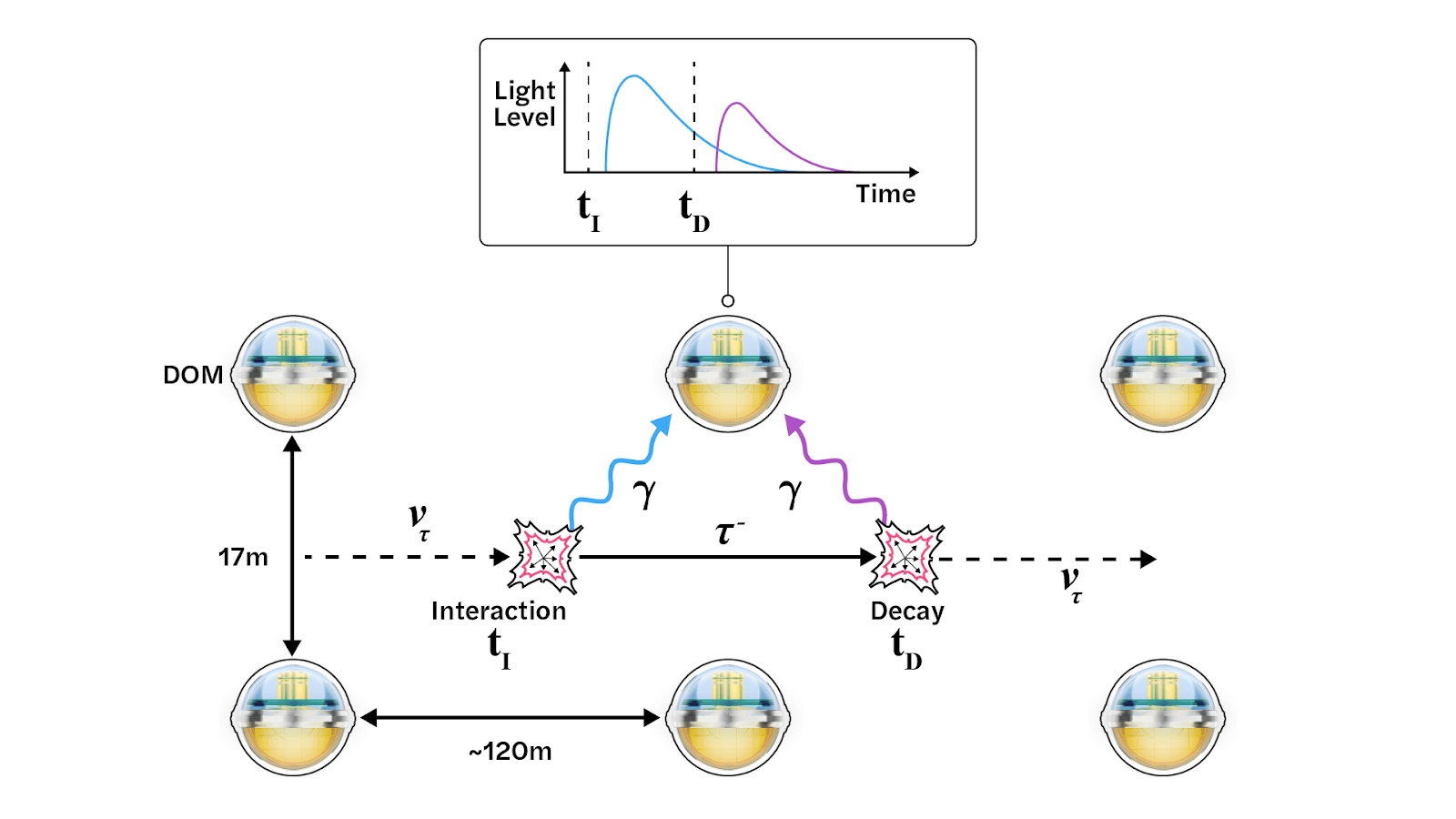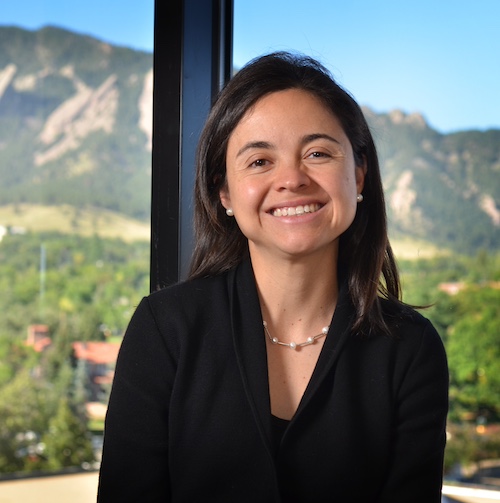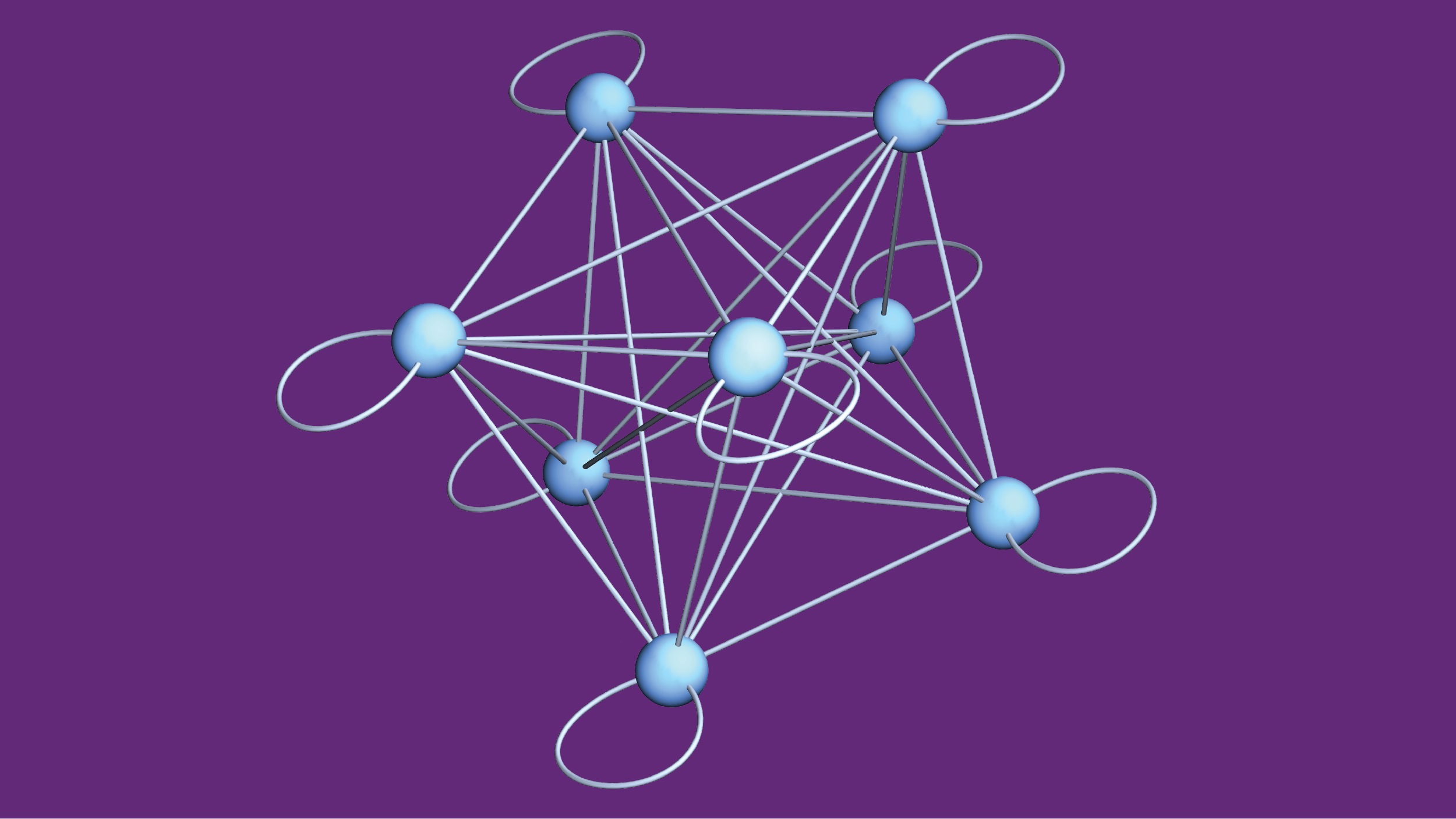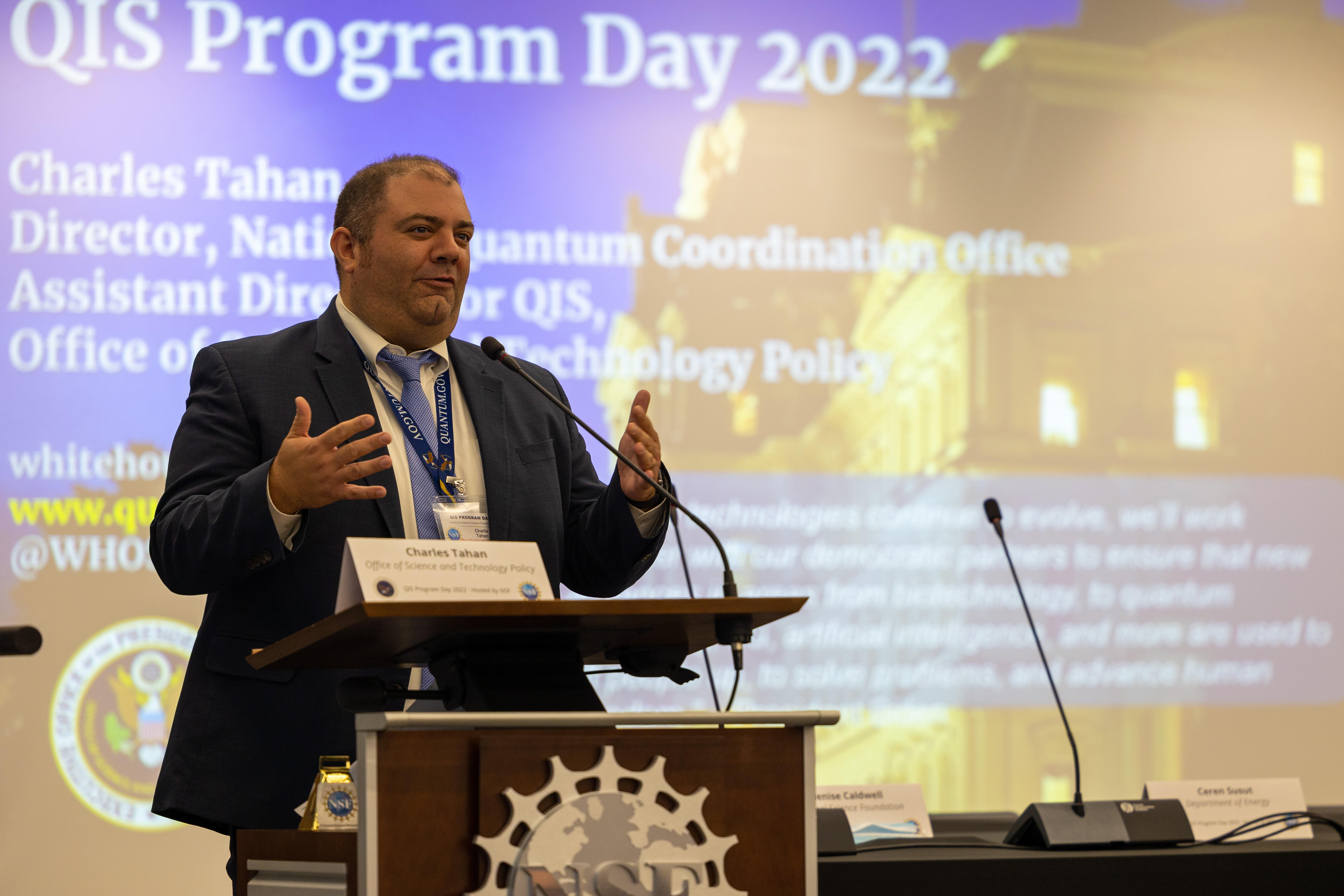Neutrinos are tiny, weakly interacting subatomic particles that can travel astronomical distances undisturbed. As such, they can be traced back to their sources, revealing the mysteries surrounding the cosmos. High-energy neutrinos that originate from the farthest reaches beyond our galaxy are called astrophysical neutrinos and are the main subject of study for the IceCube Neutrino Observatory, a cubic-kilometer-sized neutrino telescope at the South Pole. In 2013, IceCube presented its first evidence of high-energy astrophysical neutrinos originating from cosmic accelerators, beginning a new era in astronomy.
These cosmic messengers come in three different flavors: electron, muon, and tau, with astrophysical tau neutrinos being exceptionally difficult to pin down. Now, in a new study recently accepted as an “Editors’ Suggestion” by Physical Review Letters, the IceCube Collaboration presents the discovery of the once-elusive astrophysical tau neutrinos, a new kind of astrophysical messenger.
IceCube detects neutrinos using cables (strings) of digital optical modules (DOMs), with a total of 5,160 DOMs embedded deep within the Antarctic ice. When neutrinos interact with molecules in the ice, charged particles are produced that then emit blue light while traveling through the ice, which is then registered and digitized by the individual DOMs. The light produces distinctive patterns, one of which is double cascade events from high-energy tau neutrino interactions within the detector.
 The production of a double pulse waveform. The photons from a neutrino interaction (blue) arrive at the top middle DOM at time tI, producing the first peak in the waveform, while photons from the tau lepton decay (purple) arrive at the same DOM at time tD, producing the second peak. Credit: Jack Pairin/IceCube Collaboration
The production of a double pulse waveform. The photons from a neutrino interaction (blue) arrive at the top middle DOM at time tI, producing the first peak in the waveform, while photons from the tau lepton decay (purple) arrive at the same DOM at time tD, producing the second peak. Credit: Jack Pairin/IceCube Collaboration Since prior IceCube analyses saw hints from searches for subtle signatures produced by astrophysical tau neutrinos, the researchers remained motivated to pinpoint tau neutrinos. After rendering each event into three images (see figure below), they trained convolutional neural networks (CNNs) optimized for image classification to distinguish images produced by tau neutrinos from images produced by various backgrounds. After having simulations run that confirmed its sensitivity to tau neutrinos, the technique was then applied to 10 years of IceCube data acquired between 2011 and 2020. The result was seven strong candidate tau neutrino events.
“The detection of seven candidate tau neutrino events in the data, combined with the very low amount of expected background, allows us to claim that it is highly unlikely that backgrounds are conspiring to produce seven tau neutrino imposters,” said Doug Cowen, a professor of physics at Penn State University and one of the study leads. “The discovery of astrophysical tau neutrinos also provides a strong confirmation of IceCube’s earlier discovery of the diffuse astrophysical neutrino flux.”
![]() Candidate astrophysical tau neutrino detected on November 13, 2019. Each column corresponds to one of the three neighboring strings of the selected event. Each figure in the top row shows the DOM number, proportional to the depth, versus the time of the digitized PMT signal in 3-ns bins, with the bin color corresponding to the size of the signal in each time bin, for each of the three strings. The total number of photons detected by each string is provided at the upper left in each figure. In the most-illuminated string (left column), the arrival of light from two cascades is visible as two distinct hyperbolas. The bottom row of figures shows the “saliency” for one of the CNNs for each of the three strings. The saliency shows where changes in light level have the greatest impact on the value of the CNN score. The black line superimposed on the saliency plots shows where the light level goes to zero and is effectively an outline of the figures in the top row. The saliency is largest at the leading and trailing edges of the light emitted by the two tau neutrino cascades, showing that the CNN is mainly sensitive to the overall structure of the event. Credit: IceCube CollaborationCowen added that the probability of the background mimicking the signal was estimated to be less than one in 3.5 million.
Candidate astrophysical tau neutrino detected on November 13, 2019. Each column corresponds to one of the three neighboring strings of the selected event. Each figure in the top row shows the DOM number, proportional to the depth, versus the time of the digitized PMT signal in 3-ns bins, with the bin color corresponding to the size of the signal in each time bin, for each of the three strings. The total number of photons detected by each string is provided at the upper left in each figure. In the most-illuminated string (left column), the arrival of light from two cascades is visible as two distinct hyperbolas. The bottom row of figures shows the “saliency” for one of the CNNs for each of the three strings. The saliency shows where changes in light level have the greatest impact on the value of the CNN score. The black line superimposed on the saliency plots shows where the light level goes to zero and is effectively an outline of the figures in the top row. The saliency is largest at the leading and trailing edges of the light emitted by the two tau neutrino cascades, showing that the CNN is mainly sensitive to the overall structure of the event. Credit: IceCube CollaborationCowen added that the probability of the background mimicking the signal was estimated to be less than one in 3.5 million.
UMD Research Scientist Erik Blaufuss served as an internal reviewer for the analysis, carefully studying the methods and techniques used to make the discovery. Assistant Professor Brian Clark leads the scientific working group in IceCube that produced the result. The IceCube collaboration includes several UMD faculty, including Kara Hoffman, Greg Sullivan, and Michael Larson, in addition to several graduate students and postdocs. The UMD group plays a leading role in the maintenance and operations of the detector, as well as the simulation and analysis of the data.
Future analyses will incorporate more of IceCube’s strings, since this study used just three of them. The new analysis would increase the sample of tau neutrinos that can then be used to perform the first three-flavor study of neutrino oscillations—the phenomenon where neutrinos change flavors—over cosmological distances. This type of study could address questions such as the mechanism of neutrino production from astrophysical sources and the properties of space through which neutrinos travel.
Currently, there is no tool specifically designed to determine the energy and direction of tau neutrinos that produce the signatures seen in this analysis. Such an algorithm could be used to better differentiate a potential tau neutrino signal from background and to help identify candidate tau neutrinos in real time at the South Pole. Similar to current IceCube real-time alerts issued for other neutrino types, alerts for tau neutrinos could be issued to the astronomical community for follow-up studies.
All in all, this exciting discovery comes with the “intriguing possibility of leveraging tau neutrinos to uncover new physics,” said Cowen.
+ info “Observation of Seven Astrophysical Tau Neutrino Candidates with IceCube,” The IceCube Collaboration: R. Abbasi et al. Accepted by Physical Review Letters. arxiv.org/abs/2403.02516
Original story by


